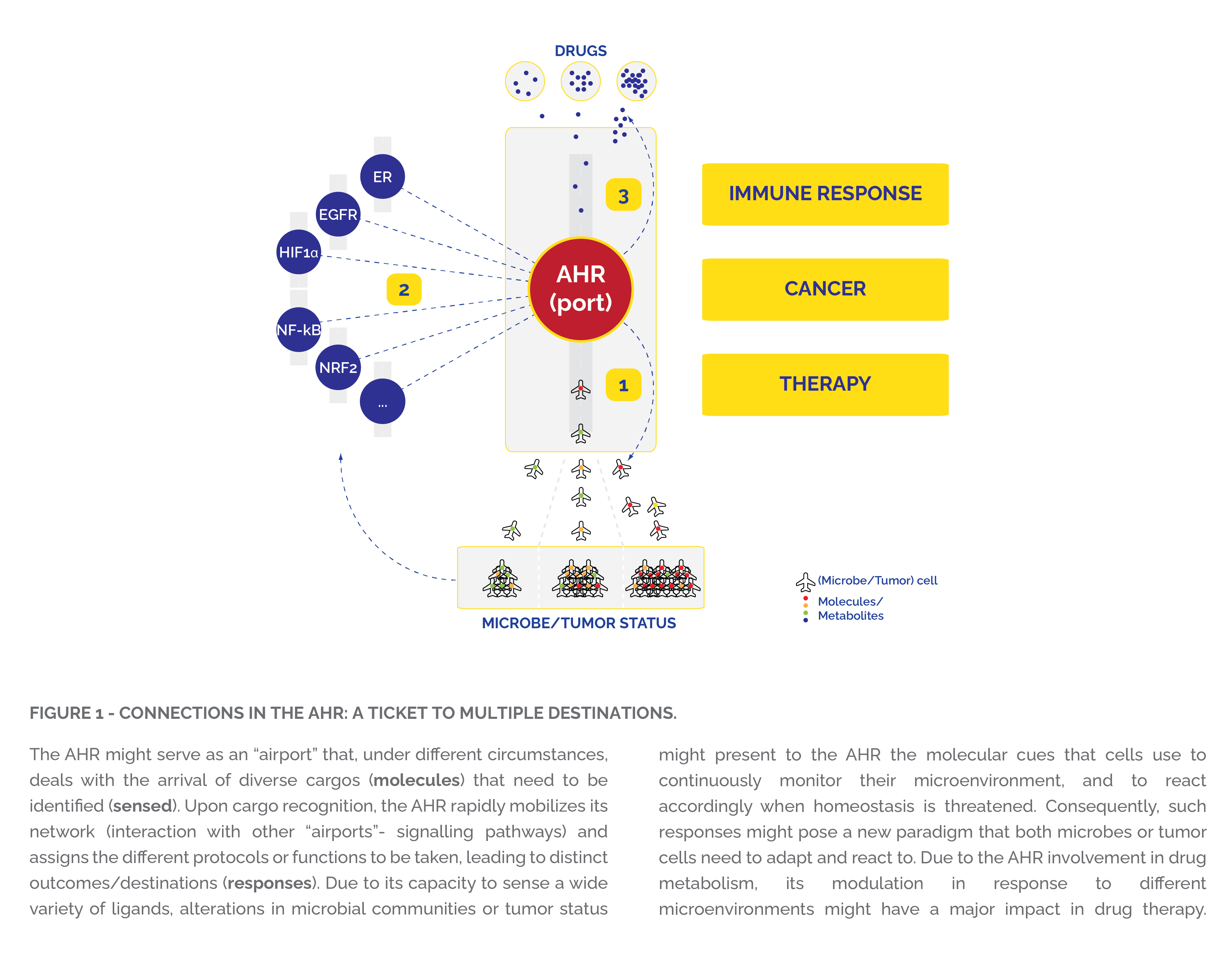Immune Sensing & Signaling Dynamics
ABOUT
The environment, microbiota, infection, diet, stress and body’s metabolism shape complex processes in health and disease. However, our current understanding of the molecular mechanisms and pathways involved in these processes is still incomplete. Cells are constantly exposed to changes in their microenvironment and have to continuously monitor and adapt to respond to such insults and alterations that might profoundly impact their homeostasis. Multiple cellular sensors have been shown to respond to such insults, including the Aryl Hydrocarbon Receptor (AHR). In our lab, we study the role of the AHR as a dynamic and key sensor of the microenvironment and homeostasis, capable of fine-tuning different cellular responses in a timely and controlled manner, tailored to the nature and extent of the insult, and to the cellular and tissue context.
RESEARCH
The AHR is a ligand-activated transcription factor able to sense a wide range of molecular cues, including environmental, dietary, microbial, disease and drug related molecules. The AHR integrates information from the different extrinsic and intrinsic signals and translates it into cellular responses, tailored to a specific ligand, cell type, and tissue context, albeit by not fully understood mechanisms. Notably, the AHR has been reported to crosstalk and be a convergence point with several signalling pathways inside the cell, including those regulating inflammation, immunity, cell proliferation and differentiation, cell morphology, cell adhesion, and cell migration. Altogether, the AHR is known to modulate processes highly relevant to cellular, tissue and organism development, maintenance and homeostasis. Its regulation and functions have been linked to diverse immune responses, resistance to infection, tissue regeneration, xenobiotic metabolism, as well as to different pathological conditions, such as inflammatory disorders and cancer. Furthermore, modulation of the AHR pathway in response to a perturbation of cellular and tissue homeostasis profoundly impacts therapy in diseases such as cancer and microbial infections.
In sum, the AHR can be described as an airport, the AHR(port), where different cargos from diverse origins constantly arrive (microenvironment), need to be identified (sensed) and sorted to the various destinations (responses) (Figure 1). Although, how the AHR processes such information and modulates different functions is not fully understood.
With a focus on host-microbe interactions and cancer, our main research objectives are:
- To evaluate how the AHR senses and shapes the microenvironment, and how it modulates different cellular and tissue responses (with a focus on immune responses).
- To dissect the AHR intracellular network in different microenvironments, and its impact on AHR elicited responses.
- To assess how AHR modulation impacts therapy efficacy.

Team
Ongoing Projects
Proponent: Instituto de Investigação e Inovação em Saúde - Universidade do Porto
Sponsor: Eur.Soc.Clinical Microb. Infect. Diseases (ESCMID)
From 01-NOV-24 to 30-APR-26
Proponent: Instituto de Investigação e Inovação em Saúde - Universidade do Porto
Sponsor: FCT - Fundação para a Ciência e a Tecnologia
From 16-JUN-25 to 14-JUN-28

